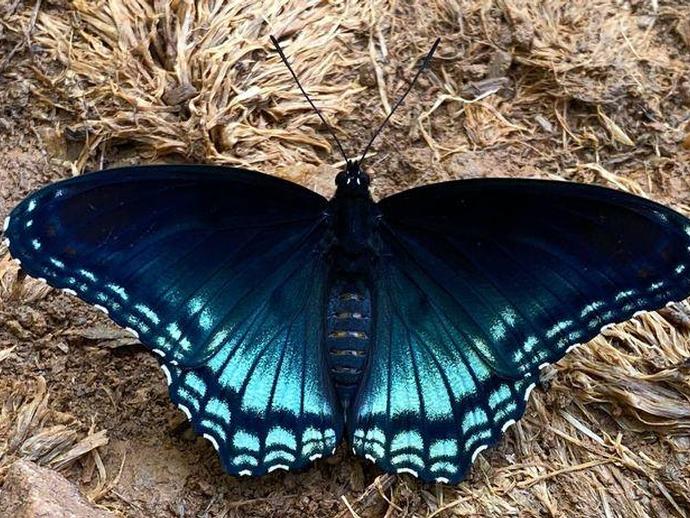September 30, 2021
Ben here with today's edition of #BenInNature presented by our friends at Carter Bank & Trust!
I first shared this species about six months ago when I spotted it on a trip to South Carolina, but that individual was pretty beaten-up and rough looking, so I figured I'd share a pristine example! This is Limenitis arthemis, also known as the red-spotted purple or the white admiral,
Those two different common names illustrate the most fascinating aspect of this butterfly: depending on where you find it, this species will look wildly different! In the southern part of their range, red-spotted purples look a lot like this one; this is because they have evolved to superficially resemble Battus philenor, the pipevine swallowtail butterfly, which is poisonous. This is what's known as Batesian mimicry, in which non-harmful species evolve to resemble species that are harmful to potential predators and thereby gain a measure of protection themselves.
In the northern portion of this species' range, however, there are no pipevine swallowtails. Since there was no evolutionary pressure to resemble the pipevine swallowtail in the north, the Limenitis arthemis found in that portion of the country have a white band on each wing, which is where the northern butterflies get the name "white admiral!"
ABOUT #BenInNature
Social distancing can be difficult, but it presents a great opportunity to become reacquainted with nature. In this series of posts, Administrator of Science Ben Williams ventures outdoors to record a snapshot of the unique sights that can be found in the natural world. New updates are posted Monday - Friday, with previous posts highlighted on the weekends. This series of posts is made possible thanks to the support of VMNH Corporate Partner Carter Bank & Trust (www.cbtcares.com).
NATURE PHOTO IDENTIFICATIONS
If you discover something in nature that you would like help identifying, be sure to message us right here on Facebook with a picture (please include location and date of picture) and we'll have our experts help you identify it!

 Hours & Admissions
Hours & Admissions Directions
Directions

